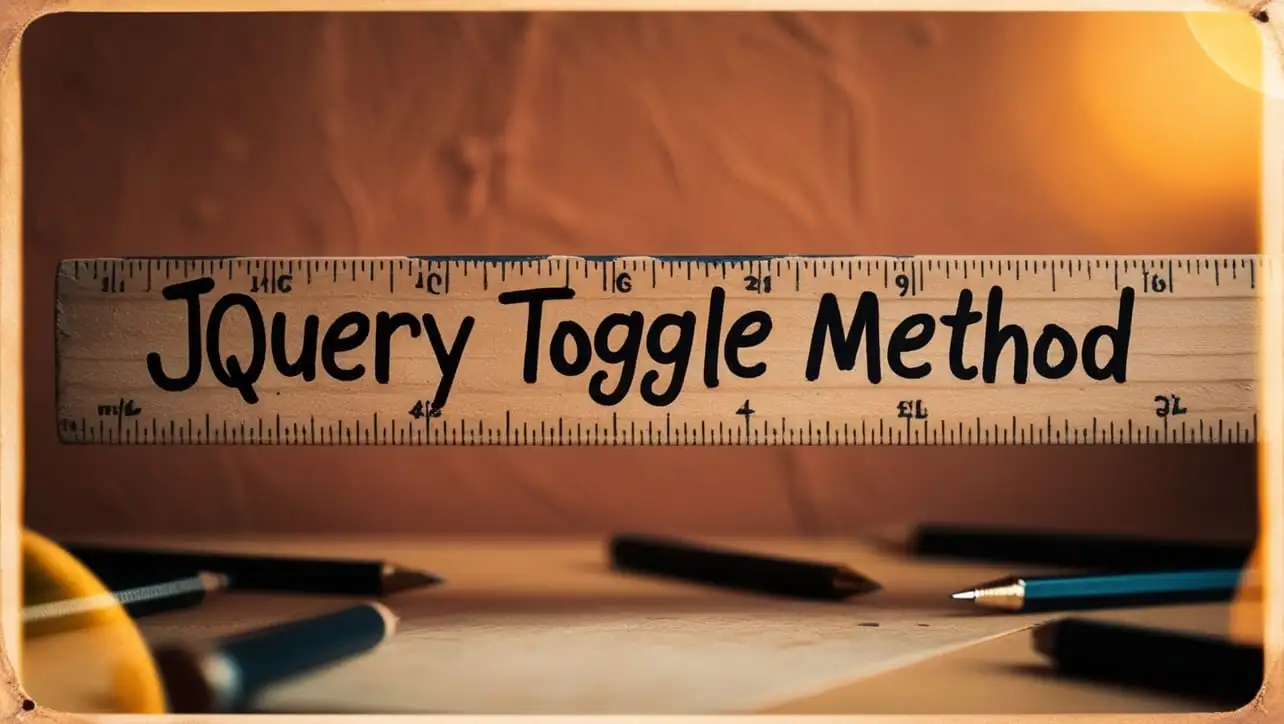
jQuery Topics
- jQuery Introduction
- jQuery Callbacks
- jQuery deferred
- jQuery selectors
- jQuery Ajax Events
- jQuery Ajax Methods
- jQuery Keyboard Events
- jQuery Keyboard Methods
- jQuery Form Events
- jQuery Form Methods
- jQuery Mouse Events
- jQuery Mouse Methods
- jQuery Event Properties
- jQuery Event Methods
- jQuery HTML
- jQuery CSS
- jQuery Fading
- jQuery Traversing
- jQuery Utilities
- jQuery Properties
jQuery .toggle() Method

Photo Credit to CodeToFun
🙋 Introduction
jQuery is renowned for its ability to simplify JavaScript tasks, and the .toggle() method is no exception. This versatile method allows you to toggle between the visibility states of HTML elements with just a single line of code. Whether you want to show or hide elements based on user interactions or other conditions, mastering the .toggle() method can greatly enhance your web development skills.
In this guide, we'll explore the various applications of the jQuery .toggle() method with clear examples to help you understand its potential.
🧠 Understanding .toggle() Method
The .toggle() method in jQuery is used to toggle the visibility of HTML elements. It allows you to switch between showing and hiding elements with a smooth animation transition if desired. This method is particularly useful for creating interactive user interfaces and enhancing the user experience on your website.
💡 Syntax
The syntax for the .toggle() method is straightforward:
$(selector).toggle();📝 Example
Toggling Visibility of Elements:
Let's say you have a button and a paragraph element that you want to show and hide alternatively when the button is clicked. You can achieve this using the
.toggle()method as follows:index.htmlCopied<button id="toggleButton">Toggle Paragraph</button> <p id="toggleParagraph" style="display: none;">This paragraph will be toggled.</p>example.jsCopied$("#toggleButton").click(function() { $("#toggleParagraph").toggle(); });This will toggle the visibility of the paragraph element each time the button is clicked.
Using Toggle with Animation:
You can add animation effects to the toggle operation to make it more visually appealing. For instance, let's toggle a div with a slide effect:
index.htmlCopied<button id="toggleButton">Toggle Div</button> <div id="toggleDiv" style="display: none; width: 200px; height: 100px; background-color: lightblue;"></div>example.jsCopied$("#toggleButton").click(function() { $("#toggleDiv").toggle("slide"); });This will slide the div up or down depending on its current visibility state.
Toggle with Conditional Logic:
You can also toggle elements based on certain conditions. For example, let's toggle a paragraph based on whether a checkbox is checked:
index.htmlCopied<input type="checkbox" id="toggleCheckbox"> Toggle Paragraph <p id="conditionalParagraph" style="display: none;">This paragraph will be toggled based on the checkbox.</p>example.jsCopied$("#toggleCheckbox").change(function() { if ($(this).is(":checked")) { $("#conditionalParagraph").toggle(); } });This will toggle the paragraph when the checkbox is checked.
Toggling Multiple Elements:
You can toggle multiple elements simultaneously by passing multiple selectors to the
.toggle()method. For example:example.jsCopied$(".toggleClass1, .toggleClass2").toggle();This will toggle the visibility of all elements with the classes toggleClass1 and toggleClass2.
🎉 Conclusion
The jQuery .toggle() method provides a simple yet powerful way to toggle the visibility of HTML elements on your web page. Whether you need to show or hide elements based on user interactions, conditions, or simply for visual effects, this method offers an efficient solution.
By mastering its usage, you can create more dynamic and engaging user interfaces with ease.
👨💻 Join our Community:
Author

For over eight years, I worked as a full-stack web developer. Now, I have chosen my profession as a full-time blogger at codetofun.com.
Buy me a coffee to make codetofun.com free for everyone.
Buy me a Coffee












If you have any doubts regarding this article (jQuery .toggle() Method), please comment here. I will help you immediately.